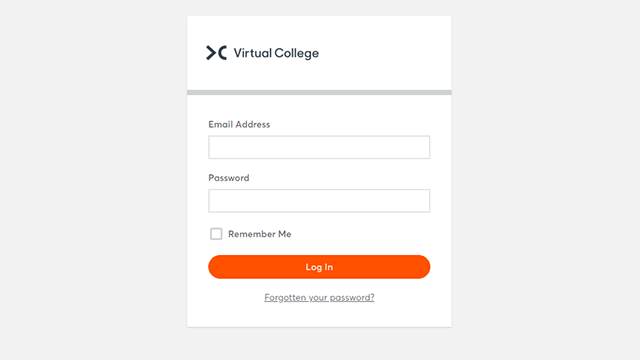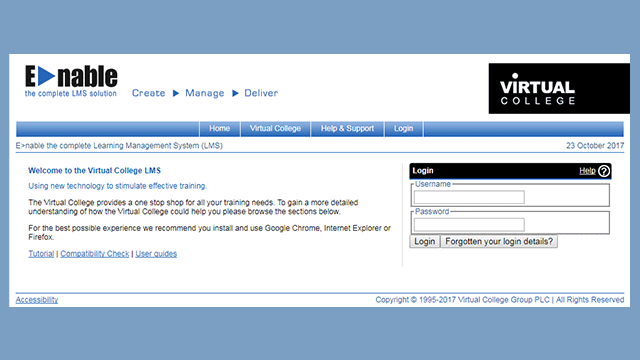What Are the Signs of a Heart Attack?
It’s estimated that there is one hospital admission every five minutes due to heart attacks in the UK. That’s around 100,000 people every year that suffer from a heart attack.
This dangerous medical condition can be triggered by several different things, and whilst it is more common in certain demographics, anyone can suffer from a heart attack. Whether you’re a trained first aider or not, knowing the signs of having a heart attack and what to do if someone is having one can save lives. In this article, we explain how to recognise the early signs of a heart attack and how to care for someone until professional medical help arrives.
Please note that this information does not qualify you as an official first aider, and Virtual College advises calling 999 in the first instance at the scene of an emergency.
This material and any associated assessments do not constitute a qualification or accreditation as an official first aider. All content provided is for general information only.
What is a Heart Attack?
Heart attacks are medical emergencies in which the supply of blood to the heart, or part of the heart, becomes blocked suddenly. This means that the heart muscle itself becomes starved of the oxygen that it requires to operate properly, and significant damage can occur.
There are a variety of causes of heart attacks, but blood clots are generally the most common. Some people with conditions such as angina, in which the arteries going towards the heart can narrow, are more susceptible to heart attacks.
In many cases, heart attack victims make a complete recovery, but in severe instances, or those in which medical help is not sought quickly, cardiac arrest can occur. This is when the heart stops beating altogether, which prevents the person from breathing normally and can kill them very quickly. Heart attacks and cardiac arrests are different conditions, but they are potentially linked.
Heart attack outcomes are heavily dependent on the speed at which they are treated. If you are in any doubt as to whether someone is having a heart attack, call 999 immediately.
What Can Cause a Heart Attack?
The main cause of heart attacks is coronary heart disease, which happens when a person’s coronary arteries are clogged with cholesterol. This condition is more likely in people who smoke, eat a lot of fat in their diet, have high cholesterol or high blood pressure, or are overweight.
Drug use can also cause heart attacks because certain stimulants make the coronary arteries narrow which restricts blood supply and can trigger a heart attack. Low levels of oxygen in the blood can also cause a heart attack because unoxygenated blood can damage the heart muscles.
What are the Signs of a Heart Attack?
Depending on the cause and the person involved, the symptoms and signs of having a heart attack can vary. The most common heart attack symptoms include the following:
- Tightness, heaviness or pain in the chest, which sometimes gives the sensation of burning
- Pains in the chest that can sometimes spread to the arms, neck and jaw
- Pale skin
- The feeling of being lightheaded or dizzy
- Fast but weak pulse
- Sweating
- Shortness of breath
What Are Signs of a Heart Attack in a Woman?
Men and women usually experience different symptoms when having a heart attack, especially in the early stages. Whilst one of the key heart attack symptoms for men is pain in the chest and arms, women are more likely to feel pain and tightness in their back and jaw as well, experience a sudden feeling of anxiety, feel nauseous or start coughing and wheezing.
Women are less likely to realise that they are having a heart attack than men are, and because of this are less likely to receive the rapid treatment necessary for making a full recovery. If you experience any of the above symptoms then you should always call 999 straight away so that you can be assessed as quickly as possible and given any urgent treatment.
What to Do if Someone Is Having a Heart Attack
Whether you’re dealing with a heart attack as a first aider or just as a passerby, your responsibility is to manage the situation as best you can until emergency medical help arrives, as you will not be able to resolve the condition on your own. As a result, if someone is experiencing the common signs of a heart attack, your very first step should be to call 999 and inform the operator that you are dealing with a heart attack victim.
Once you have done this, take the following steps:
Sit the Person Upright
Help the heart attack victim into a more comfortable position if they can move. Most guidance recommends that they should sit on the floor, against a wall, with their legs bent in front of them.
This position is designed to ease the strain on the heart, and will also help protect them from falling and sustaining any additional injuries if they become unconscious at any point. It also makes breathing more comfortable, which is important in trying to keep their condition stable.
Administer Aspirin
If it is readily available, you should give the person one 300mg aspirin tablet, and tell them to chew it slowly. You must check beforehand that they are not allergic to this type of drug.
Aspirin reduces the likelihood of blood clotting, and as a result, can potentially reduce the risk of the heart attack becoming worse. It’s often used regularly by people susceptible to heart attacks.
Keep the Person Calm
Try to keep the person as calm as possible whilst waiting for help to arrive, as this will reduce their stress levels and therefore heart rate. Try and keep talking to them and make the surrounding environment as calming and comfortable as possible, minimising the likelihood that anything else will trigger an increase in stress.
Monitor Symptoms
Whilst waiting for an ambulance, you must continually monitor the person’s condition for changes in breathing, pulse and responsiveness. Try and keep them talking to you and continue to measure their pulse every minute to check for any significant changes.
If the person’s condition suddenly worsens, you need to call 999 again and update them on the new symptoms. Someone in a stable condition may be fine to wait for an ambulance, whilst someone rapidly deteriorating needs medical intervention more urgently.
Give CPR or Use a Defibrillator
In the most severe situations, the person having a heart attack may experience cardiac arrest before an ambulance arrives. Should this happen, they may stop breathing and their heart may stop beating.
If the person has stopped breathing you should begin CPR immediately if you feel comfortable doing so. Chest compressions are the most important element of this, but you can also give rescue breaths if you want.
Defibrillators are now installed in many public places and buildings to be used in the event of cardiac arrest. If you are with someone that has had a heart attack and stopped breathing, you can use a defibrillator to try and restart their heart before an ambulance arrives.
As a first aider, you may already have been given training in how to use a defibrillator. Don’t worry if not however, as these machines give audio instructions to the person using them, and you can also ask the 999 operator to talk you through what to do.
How Is a Heart Attack Treated?
Heart attacks are treated by trying to get the blood flowing through your heart normally again, as this minimises the amount of damage that is done and leads to better recovery.
This can be done through coronary angioplasty which involves stents being fitted in the blocked coronary artery to keep it open. Medication might also be given to dissolve the blood clot that is blocking the artery.
Heart attacks can also be treated with coronary bypass surgery, which uses a blood vessel from a person’s leg, arm or chest to get the blood flowing normally again by bypassing the blocked artery.
FAQs
How long does a heart attack last?
The length of a heart attack varies from person to person. In some cases, a heart attack can last only a few minutes whilst in others, a heart attack may last up to several hours.
What happens when you have a heart attack?
When you have a heart attack the supply of blood to the heart becomes blocked, usually by a blood clot. This blockage leads to a variety of physical symptoms but can also cause cardiac arrest, which stops the heart from beating and can kill you.
What is the difference between cardiac arrest and heart attack?
Heart attack is a term used to describe what happens when a coronary artery becomes blocked and the heart cannot function properly. Cardiac arrest is a term that describes what happens when the heart stops pumping blood around the body.
Summary
Heart attacks can be scary to witness, but the sooner you respond and get the right medical treatment, the higher the person’s chance of recovery. It’s a situation that is often covered in first aid training because of how common heart attacks are, but the majority of people will never have to use this information in a real emergency. However, knowing what to do can help you and the person suffering from a heart attack to feel calmer in this situation which will lead to a more positive outcome, which is why this element of first aid training is so important.
If you’re looking for first aid training that will prepare you for what to do with a heart attack, we offer an online ‘First Aid at Work’ course that covers how to complete the primary survey and what steps to take depending on a person’s condition.


































